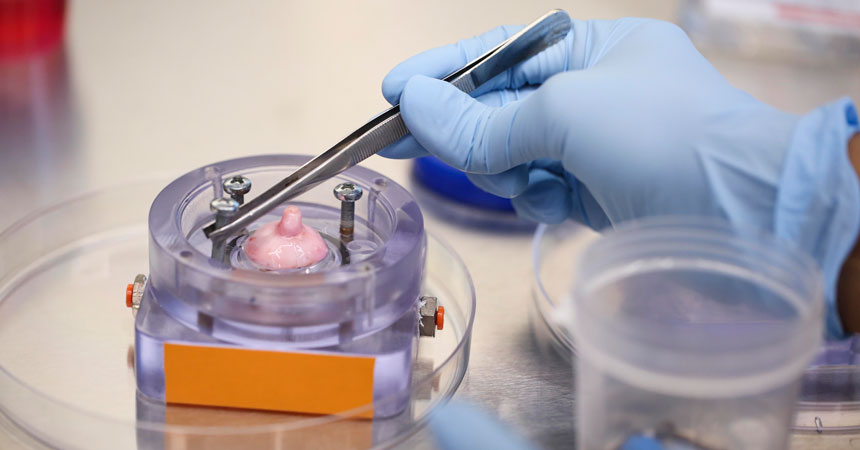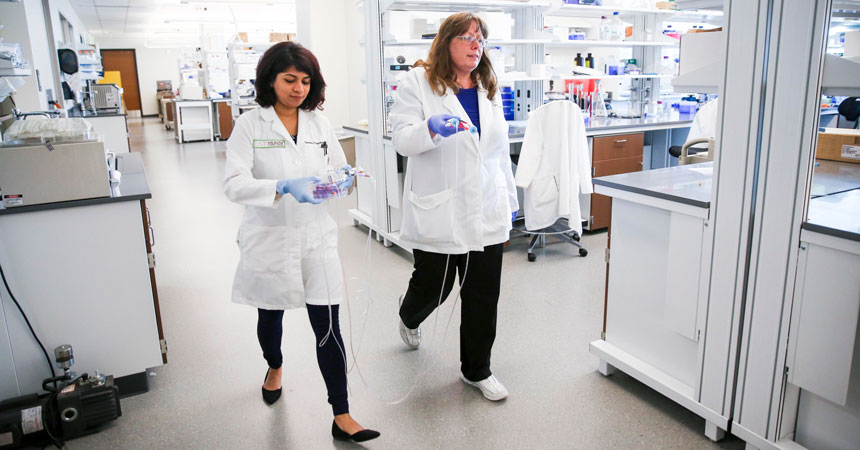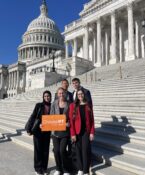Researcher studies the impact of space on the human eye
By Jan Jarvis
Vision loss is one of the risks astronauts face when they return from space flights.
Called Spaceflight Associated Neuro-Ocular Syndrome or SANS, the condition is characterized by swelling in the optic nerve head. Other ocular abnormalities of SANS include flattening of the back of the eye, vascular changes and decreased near vision.
To understand why this vision loss occurs, Dr. Tasneem Sharma has developed a patent-pending device, translaminar autonomous system or TAS, that measures intraocular and intracranial pressure. She is testing the device using the backs of nearly 80 human donor eyes.
“With this model, we are able to look at how human eyes functions under different conditions,” she said. “If the model is successful, it could be a cost-effect way to test various therapies.”
Dr. Sharma, a research scientist in the North Texas Eye Research Institute, recently received a $321,000 grant from theTranslational Research Institute for Space Health (TRISH) to study the device she developed. TRISH leads the national effort in translating innovative emerging terrestrial biomedical research and technology development into applied space flight human risk mitigation strategies for human exploration missions.
With SANS, the neuronal cell in the eye that connects to the brain is exposed to intracranial pressure as well as intraocular pressure. Chronic, mildly elevated intracranial pressure in space causes changes in the eye tissue that manifest as SANS.
“Six months after returning from space, 70 percent of all astronauts suffer some sort of vision loss,” Dr. Sharma said.
For most astronauts the vision loss is mild and their sight returns, but for some, vision changes persist. There is growing concern about what happens following longer-duration missions and whether the risk for blindness increases.
Dr. Sharma will use the translaminar autonomous system model to recreate the ex-vivo mechanical and pathological intracranial/intraocular pressure microenvironment of space to characterize the health of the eye neurons and understand the pathogenesis of vision loss on astronauts.








Social media